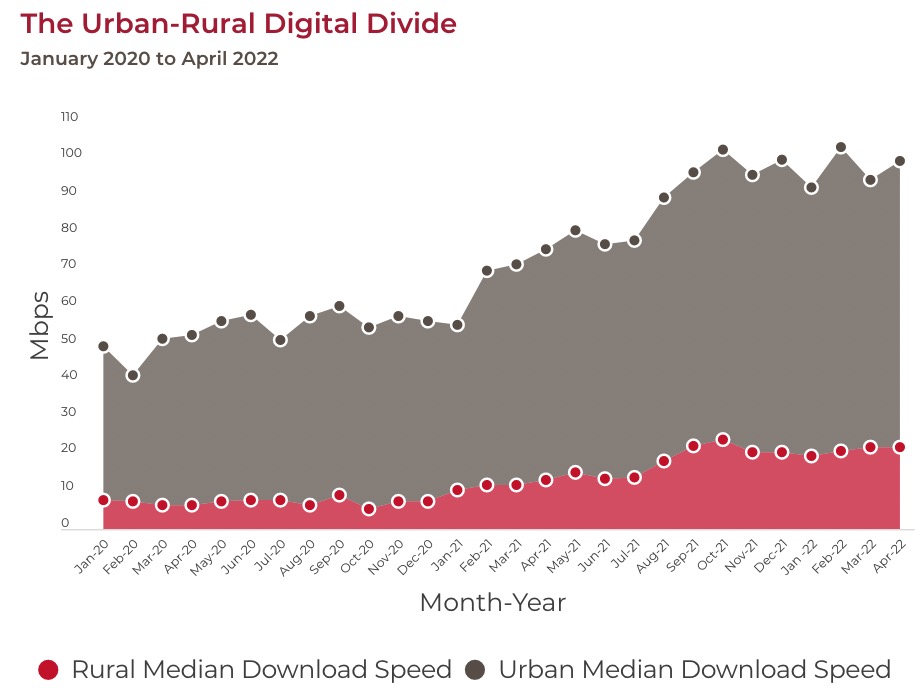
Rural Internet Gets Faster, But Still Behind CRTC Speed Target for Canadians: CIRA
The Canadian Internet Registration Authority (CIRA) released its latest internet performance data illustrating Canada’s internet speeds in urban and rural regions, revealing that rural speeds are slowly catching up to urban speeds, but still fall behind CRTC’s universal service objective.
The CRTC wants download speeds of at least 50 megabits per second (Mbps) and upload speeds of at least 10 Mbps, with an unlimited data option, for all Canadians by 2030.
CIRA’s latest release focuses on test data collected over 2021, and the first quarter of 2022. Among Canadians who ran a CIRA test, the fastest speeds were reported in urban Newfoundland and Labrador, British Columbia, and Nova Scotia; rural Alberta, Saskatchewan, and Prince Edward Island reported the slowest.
While the median download speed for rural areas has increased slightly from previous years to 20.9 Mbps in Q1 2022, in urban areas it has increased at a far greater rate, almost doubling since the start of the pandemic, to 74.61 Mbps.
Comparing provincial median rural download speeds, Alberta has the slowest among all provinces, with a speed of just 15.4 Mbps. Both Alberta and Ontario with 21.6 Mbps have slower rural download speeds than the national average.
In Q1 2022 the median download speed in Newfoundland and Labrador hit 84.5 Mbps, nearly 60 Mbps faster than it was in Alberta, which recorded a speed of 25.1 Mbps. Newfoundland and Labrador also held the fastest median download speed in 2021 at 65.3 Mbps, slightly over 50 Mbps faster than Saskatchewan’s, with a meagre 14.7 Mbps.
The data was gathered using CIRA’s Internet Performance Test. Since the launch of the program, Canadians have completed over 1,200,000 tests.


